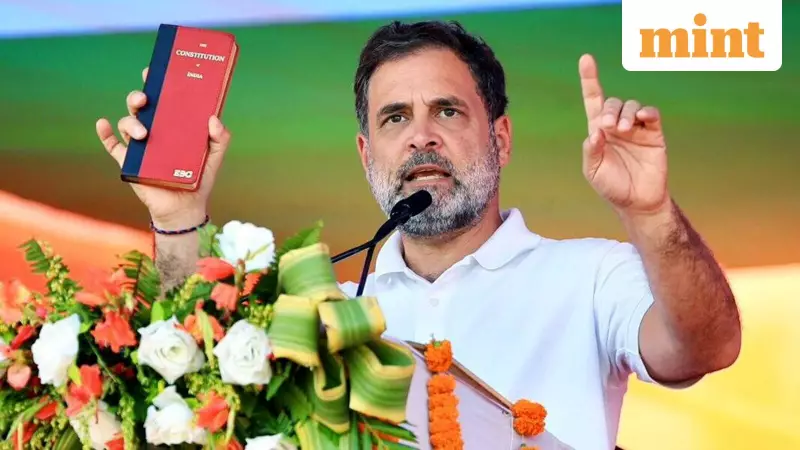
The crushing defeat of the INDIA bloc in the 2025 Bihar Assembly Elections has triggered intense soul-searching within the opposition alliance. While leaders publicly cry foul over alleged "vote chori", a closer examination reveals that deep-seated internal problems were far more responsible for the electoral setback than any claims of electoral malpractice.
The Disconnected Leadership
At the core of the failure was a visible disconnect between the alliance's two most prominent faces, Rahul Gandhi and Tejashwi Yadav. The campaign began on a high note with a powerful display of unity during the Voter Adhikar Yatra, which successfully energized their party workers and supporters.
However, this initial momentum quickly faded. For crucial weeks during the peak campaigning period, the two leaders failed to share a stage at rallies. Their absence from joint platforms prevented the INDIA bloc from presenting a united front to the electorate, a weakness that was starkly highlighted by the NDA's projection of tight organisational cohesion and clear, undisputed leadership.
Internal Tensions and Manifesto Controversy
Further complicating matters was Tejashwi Yadav's campaign strategy, which created significant disquiet within the coalition. His decision to brand the opposition's manifesto as "Tejashwi Ki Guarantee" proved to be a double-edged sword.
While the move resonated strongly with the RJD's core base, it left Congress leaders feeling marginalized and sidelined. In a multi-party coalition, this branding was perceived as an attempt to centralize the entire campaign around a single personality, undermining the spirit of partnership. This perception of one-upmanship severely damaged the internal chemistry of the alliance at the most critical juncture of the election battle.
Confusing Messaging and Delayed Endorsements
The Congress party added to the confusion by delaying its endorsement of Tejashwi Yadav as the coalition's chief ministerial candidate. This crucial announcement came only in the final stretch of the campaign, far too late to meaningfully influence voter perception or provide a clear alternative to the NDA.
This hesitation stood in sharp contrast to the NDA's consistent and unwavering projection of the Modi-Nitish "double-engine government", which effectively sold a narrative of stability and continuity to the electorate. The INDIA bloc's indecisiveness only fueled doubts about whether the coalition had resolved its own leadership hierarchy.
Compounding these issues was a fragmented campaign message. While Tejashwi Yadav focused relentlessly on local issues like unemployment and welfare guarantees, Congress leaders often veered towards national issues and grievances related to central institutions. This inconsistent messaging diluted the opposition's core pitch and made it impossible to counter the NDA's synchronized, development-focused outreach effectively.
The Verdict and Future Implications
The lack of coordination not only muddled the bloc's communication but also prevented it from rallying behind a single, powerful campaign theme capable of mobilizing undecided voters. While INDIA bloc leaders continue to attribute their loss to electoral irregularities, analysts conclude that organisational weaknesses, mixed messaging, and unresolved leadership friction played an equally, if not more, decisive role.
The Bihar verdict has exposed the alliance's deeper structural challenges, issues that will require urgent and serious attention if it hopes to mount a credible challenge in future electoral battles. The defeat serves as a stark reminder that in politics, a house divided against itself cannot stand.





